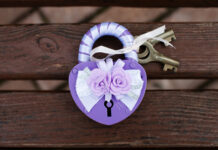Do creative environments really help foster more creativity?
I think so. And so do the authors of I Wish I Worked There.
The author Kursty Groves (with Will Knight and photos by Edward Denison) bills the book as “the first book to go behind the scenes of some of the world’s most famous companies, revealing how they maintain their creative edge.”
Lots of books have been written on the “creative secret sauce” of innovative companies…what intrigues me about this one is the apparent emphasis on physical environment as a big part of their success. (The book comes out in the UK in March, and the States in the Spring).
In the spirit of full disclosure, one of the buildings featured is the Virgin Management offices in the UK. It is quite an extraordinary building. A converted schoolhouse that now boasts a 10 foot high candy tube in the lobby, themed conference rooms around topics like love and space, colorful artwork highlighting the brand’s history on the walls, and candid photos of all the employees when you first walk in.
I didn’t have anything to do with the fact that Virgin is included, and I am interested in the subject aside from this.
What are the elements of a great creative environment?
Is it all colors, jelly beans, and squishy toys?
I first met Kursty through ?WhatIF! a global innovation agency with great offices here in NY (a converted German Asylum). I’ve never been to their UK offices but they look very cool. One of the things they have in the NY office that I think help foster creativity is as an open seating plan where people can choose every day where they want to sit. I think it allows people to mingle and interact in new ways that traditional pre-programmed cubicle seating does not. They also have plenty of common space, interesting artwork (like a huge ceramic cow on the stairwell) and fun profiles of their employees in the bathroom stalls.
At Virgin Management in the US where I work, we have a loft which is complete with a common kitchen area, hard wood floor and plenty of natural light. The common kitchen space is the heart of the office. I think some of my best ideas come from casual conversations in the kitchen waiting for the tea to brew or the micro-waved lunch to be ready.
We also have a brand timeline on one of the walls, framed Virgin record album covers on another, and a bust of Richard complete with a Mohawk (this was sent to us as part of a promotion from a company pitching an idea). We’ve models of our planes and spaceship, an old-fashioned British phone booth in the lobby, and a few signed electric guitars which will eventually be auctioned off to raise money for our charity Virgin Unite. (By the way, it’s quite a small space and we did not spend a lot to furnish it. Just focused on elements that we thought would make a difference).
The net impact of all these elements?
It doesn’t feel like just another corporate office. It brings the brand to life and puts a smile on the faces of the employees and visitors as they walk in.
Environments are potentially a huge brand communication tool. Not just to stimulate creative thinking but also to bring the brand values to life and make them tangible for everyone who passes through. I also find they are important as a recruiting tool and a gauge if someone is going to be open to our culture. You can tell right away by the reaction to the space when they walk in.
I think creatively imagined environments are essential to foster creativity. It doesn’t mean they all have to follow the same pattern. Each space should reflect the uniqueness of the brand’s personality. But I think if you are not looking at your space as a potential brand asset, you are missing out on something.
That’s my point of view. What’s your twist?
What are some of the best creative environments you’ve seen?




